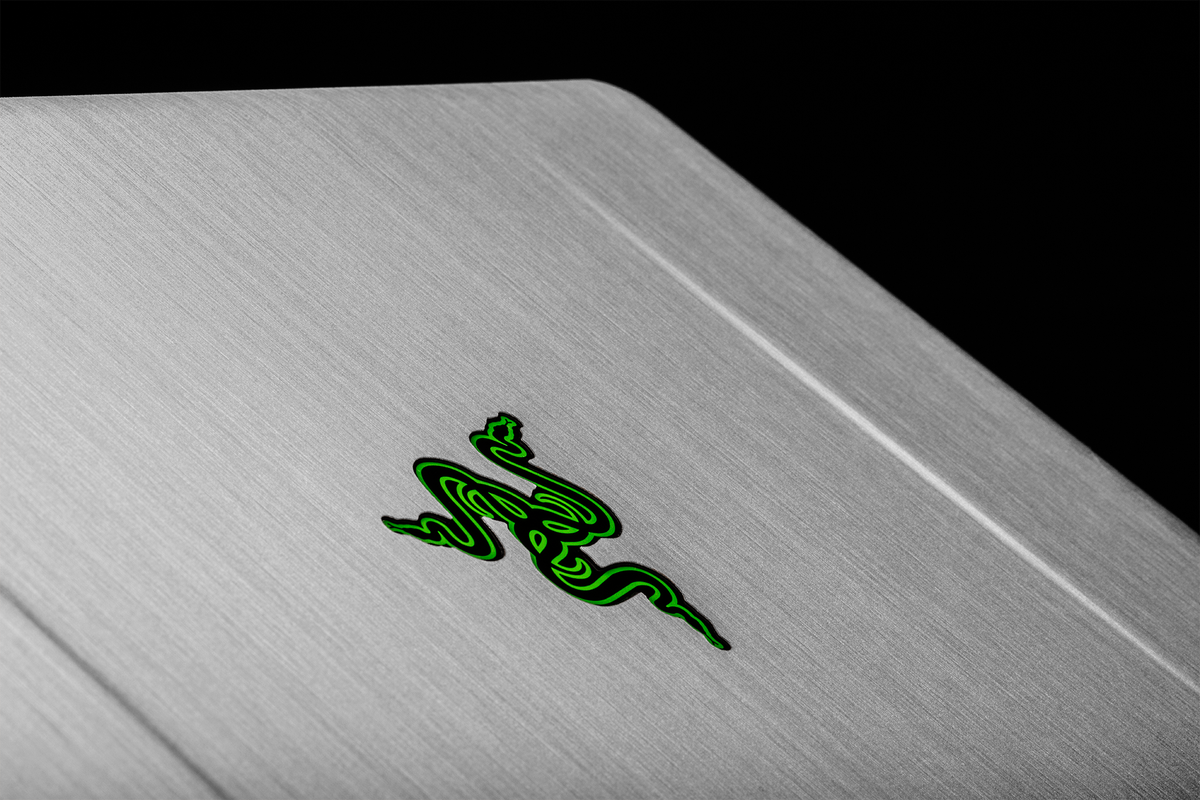

Moving up to 1440p resolution resulted in a 36.56% drop in frames for the Blade 14. The RTX 3080 in the Aorus 15P was able to get the game running at an impressive 121 fps, 28 more fps than the Blade 14. That’s faster than the TUF Dash F15 and negligibly slower than the ROG Strix G15 (98 fps). The Grand Theft Auto V benchmark (very high settings) ran at 93 fps on the Blade 14. When we boosted resolution to 1440p, we suffered a 29.33% drop in framerate, but the game was still more than playable, delivering 53 fps. However, the Gigabyte Aorus 15P with its more powerful RTX 3080 and equally-cored i7-11800H beat the Razer by 23 fps, and the Asus ROG Strix G15 Advantage Edition, which has an AMD Radeon RX 6800M with 12GB of GDDR6 and the same CPU as our review focus, beat it by 13 fps. This outperformed the Asus TUF Dash F15, which has the same GPU but with a slightly lower boost (1,390 MHz) and an Intel Core i7-11370H, which has half the cores.
#GRAY RAZER BLADE SKIN 1080P#
We ran the Shadow of the Tomb Raider benchmark on the Blade 14 at its highest settings and 1080p and saw a framerate of 75 frames per second (fps). There, the game was playable, often in the 39-42 fps range, whether I was casually exploring the map or fighting for Jesse’s life. The framerate was in the upper 20s, below the 30 fps minimum we consider playable, so I reduced ray tracing to medium.

At 1080p with ray tracing set to high, the game dropped to the mid 40s to low 50s typically, but fell to a 34 fps low.Īt 1440p and high settings, ray tracing at its high setting proved too much for the Blade 14. Ray tracing, naturally, noticeably hurt framerates. Rarely the game neared the 200 fps range, but that was in areas with very little going on, namely completing a mission in the barren astral plane.Īt 1440p, Control ran in the 43-49 fps range but went as high as 55 fps and dropped to as low as 40 fps. It sometimes reached as 144 fps during low-intensity scenes and was typically in the 113-117 fps range during intense battles, though it sometimes dropped to as low as 100 fps. When I played Control at 1080p resolution and high settings, I got a typical framerate of 120-135 fps. The GPU is paired with an AMD Ryzen 9 5900HX, which has 8 CPU cores and 16 threads. The Blade 14’s graphics card includes 8GB of GDDR6 memory, with a max graphics power of 100W and a boost clock of up to 1,410 MHz (Nvidia specs the card to run from 1,290 to 1,620 MHz with boost).
#GRAY RAZER BLADE SKIN HOW TO#
Razer, like many PC makers, doesn’t list the GPU as being Max-Q, but we confirmed by following our instructions for How to Tell if an RTX 30-Series Laptop Uses a Max-Q GPU. Our laptop configuration features one of Nvidia’s latest mobile graphics cards, a GeForce RTX 3070 Max-Q. It allowed us to enjoy 60-plus frames per second (fps) across all titles tested. The Blade 14 we reviewed is equipped for serious gaming. For example, the Asus TUF Dash F15, which also aims to be a thinner and lighter gaming laptop, is slightly thicker at 0.78 inches and weighs 4.41 pounds. Opting for a 15-inch screen will cost you a decent amount of weight and size. However, without a discrete graphics card, the MSI ultrabook is unsurprisingly lighter at 2.8 pounds. That’s all in an approximately 3.92-pound package.įor comparison, the MSI Prestige 14 Evo ultraportable, which has the same size screen but no discrete graphics card is about the same thickness (0.6 inches) and nearly matches the Blade’s 14’s width and depth (12.6 x 8.6 inches) too. It’s just 0.66 inches thick and measures 12.58 across x 8.66 inches deep. Despite packing a discrete mobile GPU, this is a still rather thin and light notebook. One of the Blade 14’s biggest assets is its small build, especially for a gaming laptop. The laptop also includes a Kensington security slot. On the right side of the Blade 14’s deck are another pair of USB-A and USB-C ports and an HDMI 2.1 port.

The laptop’s left side is also where you’ll attach the Blade 14’s proprietary charger, which is cleverly toward the north of the deck and has an angled connector that’ll keep the cable out of your way for the most part. That includes the Blade 14 itself, which can charge over USB-C with a 20V USB-C laptop charger (see our Best USB-C Laptop Chargers rundown for recommendations). The USB-C port handily serves as DisplayPort 1.4, which makes it easy to attach your best gaming monitor up to 240 Hz and can charge devices with Power Delivery 3.0 up to 100W. It features a 3.5mm headphone/mic jack, USB Type-A and USB-C (both 3.2 Gen 2) on the left side.
#GRAY RAZER BLADE SKIN FULL#
Razer manages to cram a full range of ports on the Blade 14, despite its lean build.


 0 kommentar(er)
0 kommentar(er)
